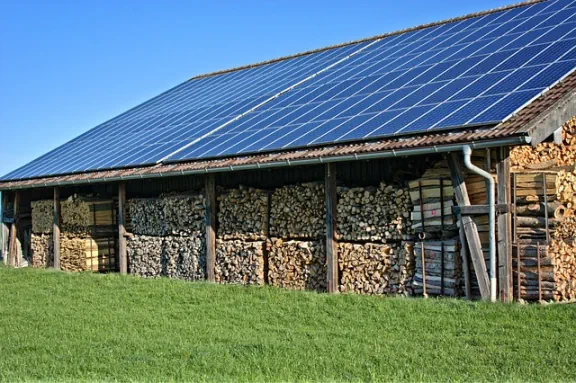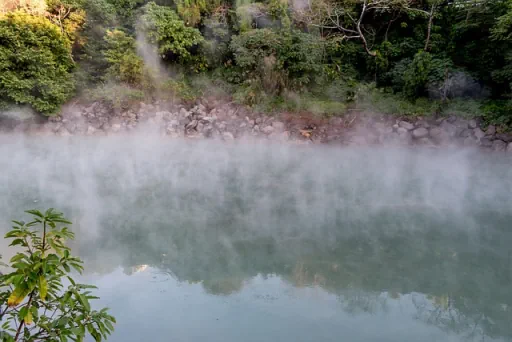
10 Eco-Friendly Ways to Heat Your Home

Table of Contents
No matter where you live, heating costs can rise beyond your means, especially during the chilly months, leaving you in a dilemma. Another painful part is that most traditional heating solutions are unfriendly to the environment. With these life-threatening risks, it’s unsurprising that many people look for cheap, eco-friendly ways to heat their homes.
Traditional heating methods heavily rely on fossil fuels- natural gas, oil, and coal-which are costly to extract from their sources. Miners also destroy valuable natural resources when extracting these fuels, leading to an increase in:
- Global warming
- Air pollution
- The risk of oil spills
- Acidic rain
The current economic situation in the world might cause more harm than ever. High demand for crude oil and low supply has significantly pushed the gas price up in 2022, prompting the Federal Reserve to increase interest rates. The reserve has done this four times this year as of the time of creating this post. Pandemic-related fiscal and monetary stimulus and the Russian invasion of Ukraine have worsened the situation.
So, what are the best eco-friendly ways to heat your home while saving some money today?

Solar heating panels on the roof
1. Solar Heating System
Solar heating could be the most efficient way to heat your home without spending much money daily. Once you acquire the required equipment, nothing much should worry you. You can expect free energy from your solar panels for the rest of your home life. The cost of the equipment is much lower than most people think. An efficient solar heating system can cost anything from $30 per square foot to $100 per square foot. For every 400 square feet, you’ll need a single solar collector. Solar panels convert the sun’s rays into direct current (DC). The power passes into an inverter that converts it into the energy required to heat your home or commercial building. Solar heating systems come in two formats:
- Air Systems: They work like traditional HVAC systems.
- Hydronic collectors: These systems heat a liquid that eventually transfers the warmth to the entire house.
Which of these heating systems suits your home? It depends on whether you have a radiant or forced-air heating system. This means you should go for hydronic collectors if you have a radiant heating system. On the other hand, you need solar air heating if you’ve got a forced-air system.
It pays to understand that solar panels are highly effective in sunnier climates. That means your local weather patterns determine whether you can use them to reduce your current energy bill to almost zero.
2. Ground Source Heat Pumps
Ground heat pumps are another eco-friendly way to heat your home. As the name suggests, they use free heat from the ground. They are connected to pipes that extract the heat and use it to heat the home.
The ground often remains at a relatively constant temperature, making this method a highly effective solution. Some people use them throughout the year without any issues. Nonetheless, you should analyze its effectiveness during the winter and consider having a backup heating system.
While the backup might serve no purpose, having one is highly prudent. The pumps have been used worldwide since the 1940s. Nevertheless, with the current technological advancements, other viable options, like geothermal heating, that you can consider worthy replacements have emerged.
3. Geothermal Heating System
Geothermal heating is another efficient and eco-friendly way to heat your home because it uses the natural heat from the Earth.
Our planet contains steady streams of hot water or springs and other substances. So, geothermal heating is a limitless source of energy. Unlike in the previous case, the weather has no impact on the temperature of the hot liquids. It constantly ranges from 42 to 80 degrees Fahrenheit, depending on where you live.

Geothermal hot spring
To take full advantage of the underground heat, you need a geothermal pump. The pump can keep your home nicely warm during the winter’s chill. It can detect cold weather, absorb the heat from the underground, and then bring it inside your home. The geothermal pump does the reverse in the summer. It absorbs the heat and keeps the living space perfectly cool.
Installing a geothermal heating system is costly, so many people are considering other alternatives. However, it can be the best option if you want to consistently save a substantial amount of money after five to ten years.
The major benefits of installing a geothermal heating system include:
- It adds a lot to your home’s resale value
- You get incentives that can help you to offset the initial cost.
- It significantly lowers utility bills.
4. Wood Stoves
Given the current impact of inflation on oil and other fuels, you can save a lot more by using wood stoves than oil. For example, if you want to heat a home in Ontario, Canada, with oil, you’ll spend approximately $4,000. With wood, you’ll pay between $150 and $250. For the best result, use EPA-certified wood stoves.
Older or improperly-used ones typically produce a lot of smoke. The improved version is 30% more efficient and delivers about 90% less smoke.
Moreover, a wood stove is easy to install, and you can install it anywhere in your home. All you need to do is be sure you can run a vent pipe to the outside of the house. If that is difficult, you can zone-heat any of your rooms.
You’ll get great results since radiant heat warms rooms faster than warm air blown through a vent. So, the heat will radiate to your home from all sides of the stove.
5. Pellet Stoves
Pellets are made from renewable sources. Most of them are made from waste products like sawdust from wood mills.
Environmentally friendly experts turn these products into affordable small pellets.

Small Pellets
Besides using recycled or renewable materials, the stoves are also low cost. You can purchase one of these stoves for less than $2,500. Pellet stoves are more eco-friendly than wood stoves. A single pellet stove can heat a 1,500-square-feet home. If your home is more spacious than this, you can purchase two stoves.
6. Masonry Heater
Another excellent option that you have when it comes to choosing eco-friendly ways to heat your home is a masonry heater. It’s a small compact heating solution like a pellet stove or traditional fireplace.
This heating solution has some unique features. It traps the heat within the smoke chambers’ bricks. So, it can provide warmth for as many as 24 hours. Masonry heaters burn wood but produce significantly less than traditional wood stoves. Better still, the wood burns slower. Due to the trapped heat and the slow burn, they use less energy to produce more heat.
Masonry heaters are also affordable, and the initial cost is worth the savings. They range from $2,000 to $5,000. If you want a customized masonry heater, you can choose the more expensive ones.
7. Upgrade the Insulation
Adding insulation is a great eco-friendly way to heat your home without spending a dollar on maintenance costs. You can use it in addition to any other efficient methods you prefer. If necessary, use it on its own to prevent heat from escaping from ducts, windows, walls, doors, and other surfaces. Upgrading your insulation can improve your home’s energy draw by up to 30%.
8. Thermal Shades
Thermal shades are great for giving homeowners peace of mind throughout the year. They block the rays of the sun in the summer. This heating source also retains heat in the winter, reducing the cost of heating your home. It also protects the environment. Adding draft guards on your home’s doors and sealing your windows give similar results.
9. Wind Power
Wind power remains one of the most eco-friendly ways to heat your home during tough economic times. Contrary to what many think, you don’t need a huge windmill to reap the benefits.

dutch windmills
Wind-power systems work in conjunction with a water tank. Wind provides the energy required to run the heater. As you can see, the heating solution can only serve you if you live in a windy area. Ensure the airflow in your area is enough to turn the turbine before installing the heating system.
10. Air Source Heat Pumps
Air source heat pumps are almost perfectly similar to ground source heat pumps. They extract heat from the atmosphere and release it inside the home. The heat comes from hot water in your taps, hot air, underfloor heating, or hot water-filled radiators. An air source pump can do the reverse in the summer.
Conclusion
Relying on the Earth’s heat, heat from the sun, wind, and other renewable or recyclable materials like pellets is far more sustainable than fossil fuels. With the Russian invasion of Ukraine and the inadequate supply of crude oil, the gas price might remain high for longer than we think. Fortunately, you can use these eco-friendly ways above to heat your home without any issues.
Hopefully, the heating systems we’ve discussed here will become more popular. At the same time, their installment costs will be reduced soon to make them a realistic choice for more households.